News

2012 Arctic IceBridge Complete
The NASA P-3 has returned home to Wallops Flight Facility after completing a record number of science flight hours for Operation IceBridge.
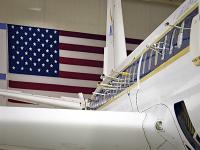
DC3: Chemistry of Thunderstorms
NASA researchers begin a campaign that will take them into the heart of thunderstorm country.
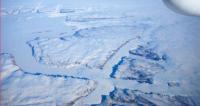
NASA's ER-2 Completes MABEL Validation Deployment
The weather, the aircraft and the science instruments cooperated to successfully validate data from the MABEL laser altimeter planned for IceSat-2.
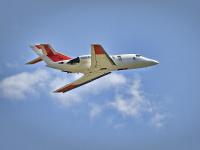
NASA Langley Aircraft Joins Operation IceBridge
NASA Langley Research Center in Hampton, Va., deployed its newly acquired HU-25C jet as part of NASA's Operation IceBridge.
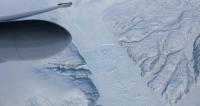
Good Ice Sheet Data Obtained on MABEL Flights
Recent validation flights of the MABEL laser altimeter on NASA's ER-2 are recording data on sea and land-ice elevation and thickness.
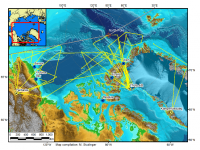
IceBridge: A New Home and a New Engine
IceBridge scientists and crew finished the first round of survey flights from Thule, Greenland and moved their base of operations south to Kangerlussuaq, Greenland.
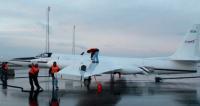
NASA ER-2 Completes MABEL Science Flight Over Greenland
A NASA ER-2 completed the first MABEL laser altimeter validation flight over northwest Greenland on Easter Sunday.

NASA ER-2 Arrives in Iceland for MABEL Validation
A NASA ER-2 Earth science aircraft has arrived in Keflavik, Iceland, to begin a series of flights to confirm the accuracy of a new laser altimeter.
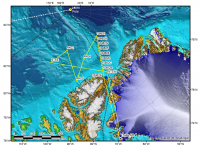
IceBridge International Collaboration
NASA’s Operation IceBridge and the European Space Agency’s CryoVEx campaign coordinated flights of two aircraft from different locations over the Arctic Ocean on a track flown shortly before by ESA’s CryoSat-2 spacecraft.
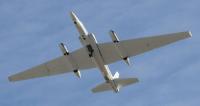
NASA ER-2 to Check Out MABEL Laser Altimeter
A NASA ER-2 Earth Resources aircraft will fly a number of high-altitude missions this spring to validate the accuracy of a new laser altimeter.
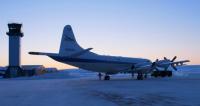
NASA's IceBridge 2012 Arctic Campaign Takes to the Skies
Researchers and flight crew with NASA's Operation IceBridge, an airborne mission to study changes in polar ice, begin the 2012 Arctic campaign.

NASA Plans Airborne Scientific Study in Southeast Asia
Researchers will probe the Southeast Asian atmosphere at a time when weather systems and air pollution pump chemicals and particles high into the air.

UAVSAR Installed on JSC G-III for AirMOSS Study
Technicians at NASA Dryden recently installed a synthetic aperture radar on a Johnson Space Center Gulfstream III for planned Earth science mission.

NASA Completes GCPEx Snow Study over Canada
NASA's DC-8 airborne science laboratory completes six-week Global Cold-season Precipitation Experiment mission, returns to Palmdale base.

NASA Science Aircraft to Travel the Globe in 2012
NASA's Airborne Science Program operates highly specialized aircraft that will be deployed all over the world in 2012 for Earth science missions.
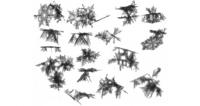
NASA's GCPEX Mission: What We Don't Know about Snow
A Snow Video Imager near a Canadian research station in Egbert, Ontario, captured these falling snowflakes as part of NASA's GCPEx mission.
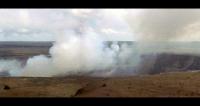
NASA's G-III Completes Hawaiian Volcano Study
NASA’s G-III research aircraft has completed a week-long airborne radar study to aid understanding of processes occurring under the Kilauea volcano.

Airborne Campaign to Measure Falling Snow
Beginning Jan. 17, NASA will fly an airborne science laboratory above Canadian snowstorms to tackle a difficult challenge facing the upcoming Global Precipitation Measurement (GPM) satellite mission -- measuring snowfall from space.
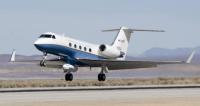
NASA G-III Repeats Hawaiian Volcano UAVSAR Study
NASA’s G-III research aircraft returns to Hawaii for a week-long UAVSAR study to aid understanding of processes occurring under the Kilauea volcano.

NASA Studies Crop Canopy Water Content, Soil Moisture
Sensors on three NASA science aircraft recorded data on water fluctuation between soil and the atmosphere over California's San Joaquin Valley.
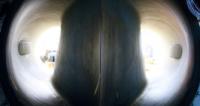
High-flying NASA ER-2 Undergoes Major Inspection and Maintenance
NASA photographer Tom Tschida gets some unusual perspectives on the high-flying Earth science aircraft as it is disassembled for major maintenance.

NASA Unmanned Aircraft Measures Greenhouse Gases
NASA researchers have demonstrated the use of an unmanned aerial vehicle to collect very low altitude airborne measurements of greenhouse gases.
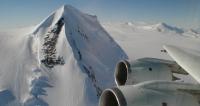
NASA's Antarctic 2011 IceBridge Campaign Concludes
NASA's DC-8 airborne science laboratory has returned to the United States after completing its Fall 2011 Operation IceBridge campaign over Antarctica.

Scientists Prepare for Coming ATTREX Climate Study
Multi-year NASA Airborne Science Program campaign to study the humidity and chemical composition of the tropical tropopause over the Pacific Ocean in 2013-2014.

NASA's Operation IceBridge Reaps Data Bonanza
Thanks to good weather, NASA's DC-8 flying lab and NCAR's G-V are maintaining a high flight rate during Fall 2011 Operation IceBridge campaign.
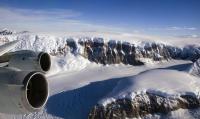
NASA Continues Critical Survey of Antarctica's Changing Ice
Scientists with NASA's Operation IceBridge airborne research campaign began the mission's third year of surveys over the changing ice of Antarctica.

NASA Global Hawks Prepare for 2012 Hurricane Study
A group of environmental scientists are preparing for a multi-year NASA Airborne Science Program investigation of Atlantic hurricane formation and intensity.

NASA’s DC-8 Flying Lab Validates Laser Instruments
Scientists conducted airborne validation of four laser techniques for measuring atmospheric carbon dioxide aboard NASA’s DC-8 flying lab.

Paving the Way for Space-Based Air Pollution Sensors
About 40 % of Americans live in counties where pollution levels still regularly exceed EPA's national air quality standards. Summer heat and relentless traffic make the D.C. metropolitan area one of the top 20 smoggiest metro areas in the country.

Mission Into Ice Clouds: Q&A with MACPEX's Michael Craig
The Mid-latitude Airborne Cirrus Properties Experiment (MACPEX) is a NASA field campaign that is investigating cirrus cloud properties and the processes that affect their impact on solar radiation. The campaign is using project management services provided by the Earth Science Project Office (ESPO) at NASA’s Ames Research Center, Moffett Field, Calif., which supports NASA’s Science Mission Directorate field research.
